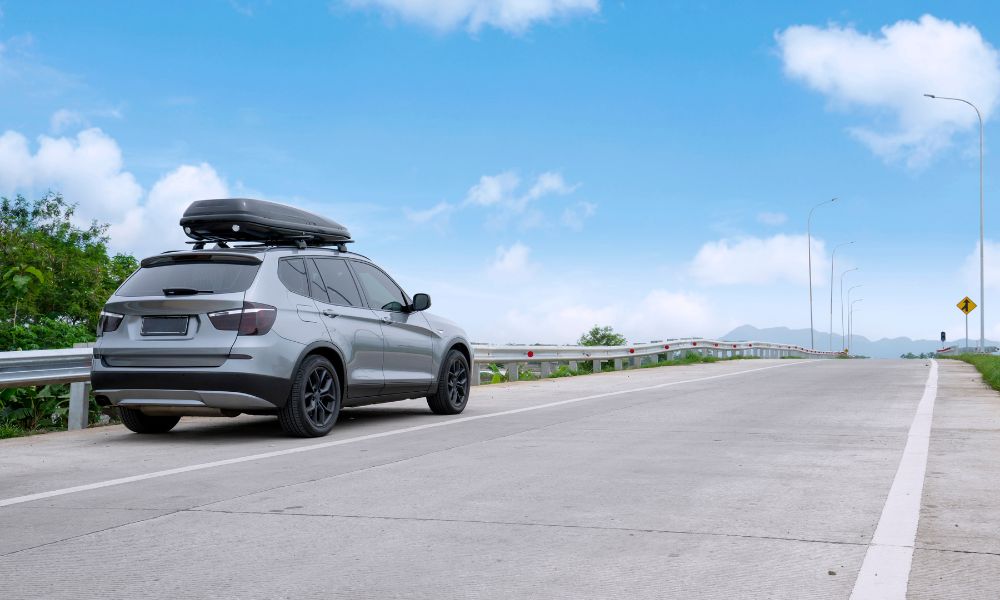Roof boxes are a popular vehicle accessory that provides additional storage space for luggage and other equipment. While they are convenient, it is crucial to consider safety when using a roof box. This article discusses the various safety considerations when using a roof box.
Factors to Consider When Choosing a Roof Box
Size and Weight
Choosing the appropriate size and weight of the roof box is crucial to ensure safety. The roof box should fit well on the roof of your car without obstructing visibility. If the roof box is too big or heavy for your vehicle, it can affect the stability and handling of the car, which can lead to accidents.
Material and Quality
The material and quality of the roof box also play a significant role in safety. Choosing a roof box made of high-quality materials that meet safety standards is essential. The material should be durable and able to withstand harsh weather conditions. A low-quality roof box may be cheaper, but it can compromise safety.
Aerodynamics
Aerodynamics reduces wind resistance and increases fuel efficiency when using a roof box. A poorly aerodynamic roof box can increase fuel consumption and affect the stability of the vehicle. Therefore, it is important to choose an aerodynamically designed roof box.
Installation
Placement
The roof box should be placed in a position that ensures maximum safety and stability. The roof box should not obstruct visibility or create additional wind resistance. Placing the roof box in the wrong position can affect the handling of the car, leading to accidents.
Securing the Roof Box
It is essential to securely fasten the roof box to the roof of your vehicle. There are different ways of securing the roof box, such as using straps, clamps, or locks. Your chosen method should be appropriate for your vehicle and the roof box. A properly secured roof box can detach from the car and cause accidents.
Loading and Unloading
Weight Distribution
The weight inside the roof box should be distributed evenly to prevent instability and accidents. Uneven weight distribution can affect car handling, especially when making turns or braking. To ensure even weight distribution, it is important to pack the roof box carefully.
Loading Height
The height at which you load and unload the roof box can affect safety. Loading and unloading the roof box from a high height can increase the risk of accidents, especially if the weight of the contents inside the roof box is not evenly distributed. Loading and unloading the roof box from a low height is recommended to minimize the risk of accidents.
Driving with a Roof Box
Speed
Driving at high speeds with a roof box on your vehicle is not recommended. High speeds can affect the stability of the vehicle and increase the risk of accidents. It is important to drive at a moderate speed and follow the speed limits provided by your vehicle’s manufacturer.
Handling
A roof box can affect the handling and maneuverability of the vehicle, especially when making turns or braking. It is important to adjust your driving style to accommodate a roof box. For example, you should take wider turns and brake slowly to avoid accidents.
Maintenance
To ensure continued safety and durability, it is essential to maintain the roof box properly. Standard maintenance practices include cleaning the roof box, checking the fastenings, and inspecting the roof box for any damages. Regular maintenance can help prevent accidents and prolong the life of the roof box.
Conclusion
In conclusion, safety should be the top priority when using a roof box. Choosing the appropriate size and weight, material and quality, aerodynamics, proper installation, loading and unloading, and driving carefully are all important considerations to ensure safety. Regular maintenance of the roof box is also crucial.
FAQs
Here are some frequently asked questions about using a roof box:
- Can I use any roof box on my vehicle? No, it would help if you chose a roof box that is appropriate for your vehicle’s specifications to ensure safety and avoid accidents.
- How often should I check the roof box’s fastenings? You should check the roof box’s fastenings before and after every trip to ensure that they are secure and tight.
- What is the maximum weight a roof box can carry? The maximum weight that a roof box can carry depends on the specific roof box and the vehicle’s specifications. Check the roof box’s manual for specific weight limits.
- Do I need to remove the roof box when I am not using it? Removing the roof box when you are not using it is unnecessary, but improving fuel efficiency and reducing wind resistance is recommended.
- Can I drive at high speeds with a roof box on my vehicle? Driving at high speeds with a roof box on your vehicle is not recommended. It can affect the car’s stability and increase the risk of accidents.
- Can I use a roof box in bad weather conditions? Using a roof box in bad weather conditions, such as heavy rain or strong winds, is not recommended. Adding weight and wind resistance can affect the vehicle’s stability, leading to accidents.
- Can I put any item in a roof box? No, you should only put items that are suitable for the roof box’s weight and size limit. Heavy or oversized items can affect the car’s stability, leading to accidents.
- Do I need to use a roof box if I have a large car trunk? It depends on your needs. A roof box can be a convenient option if you need additional storage space. However, if you have enough space in your car trunk, you may not need a roof box.
Remember, by considering these factors and following the safety tips, you can ensure a safe and stress-free journey when using a roof box.






